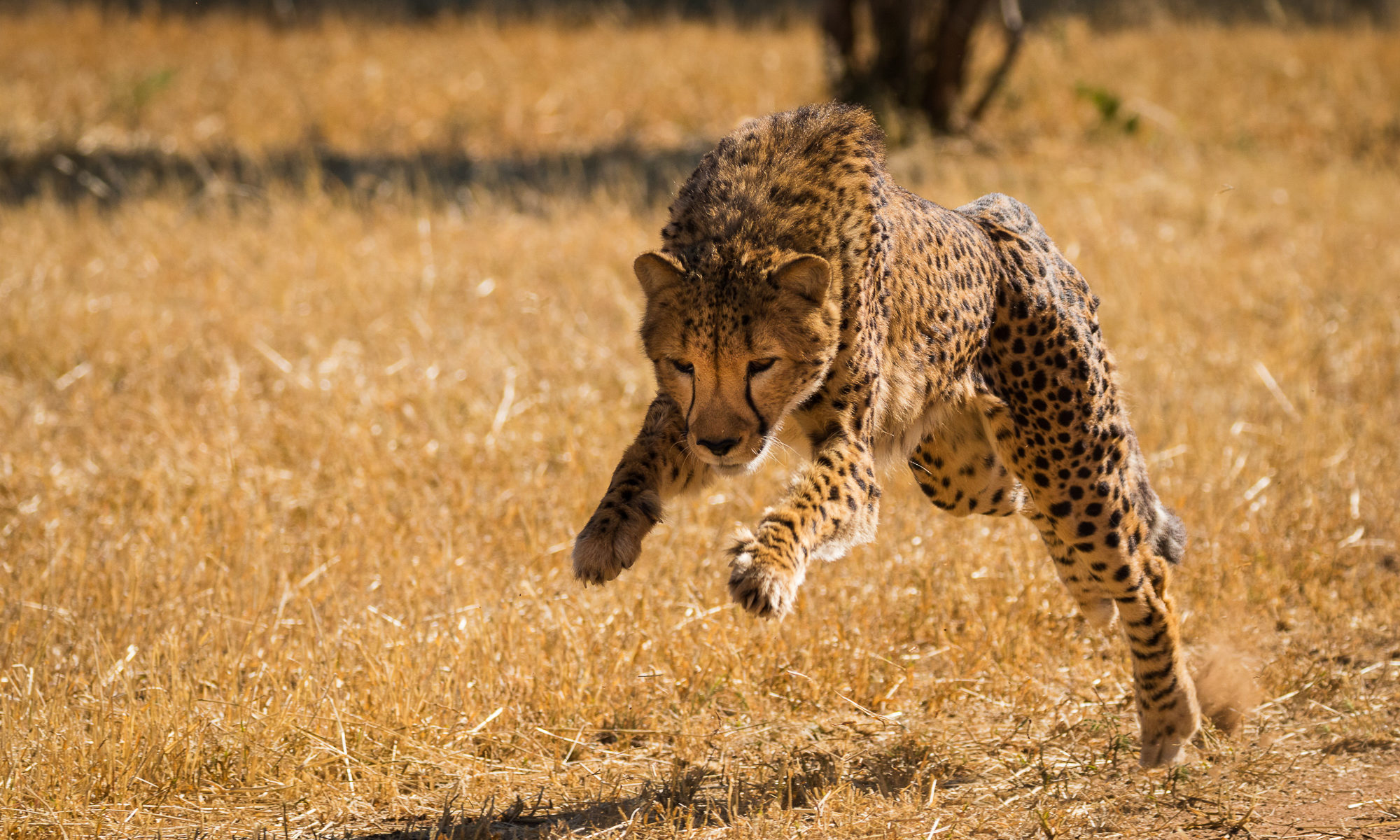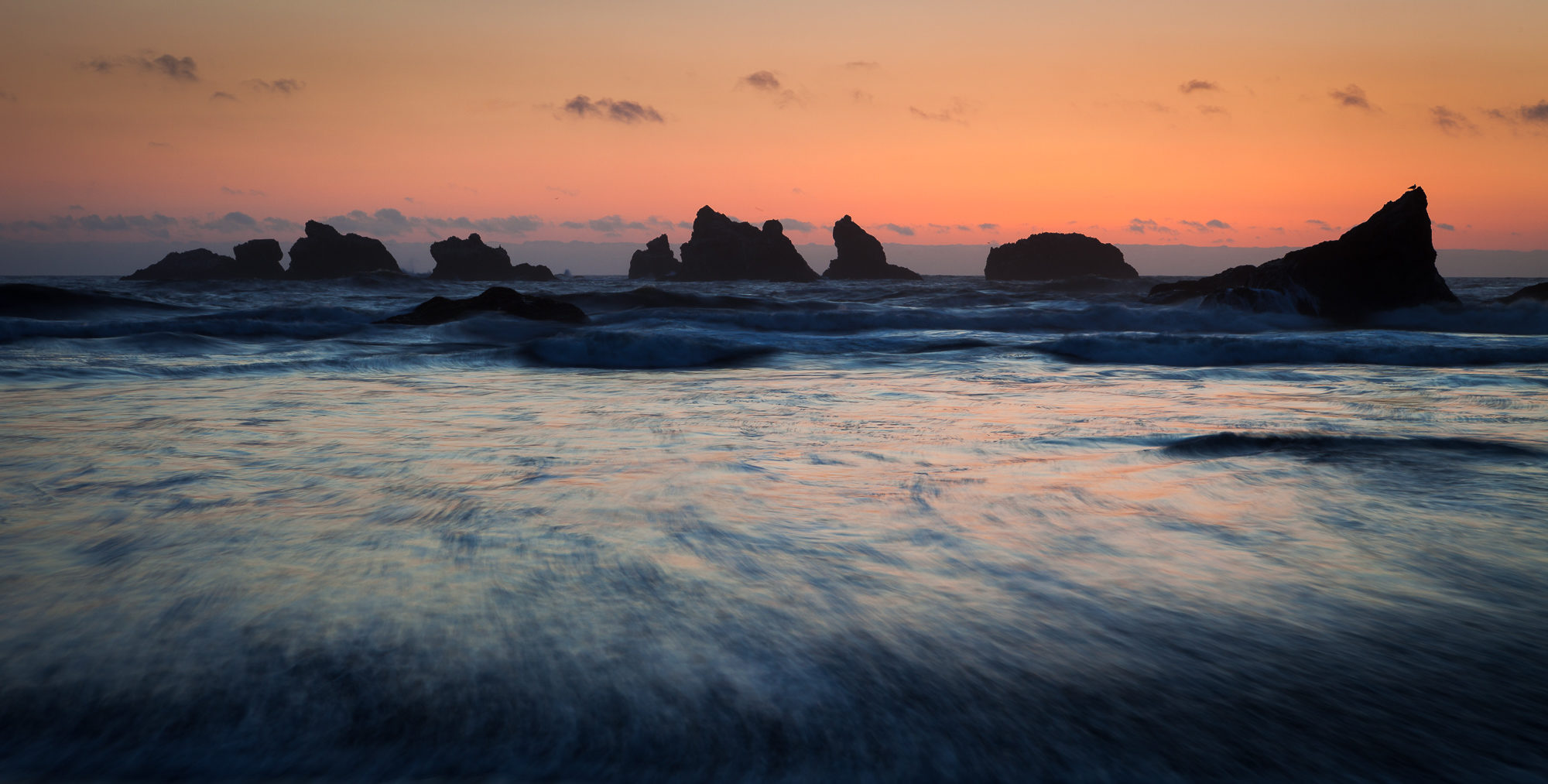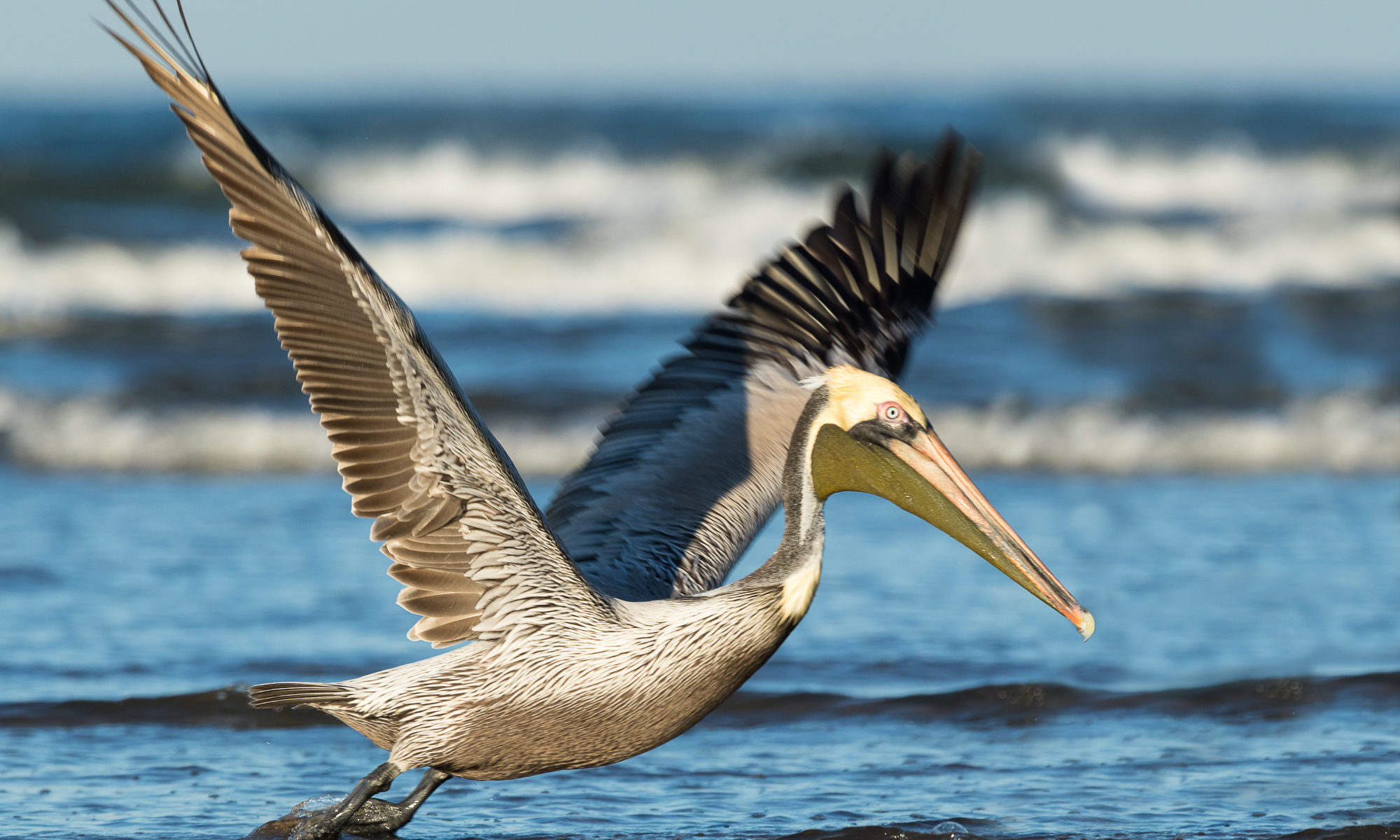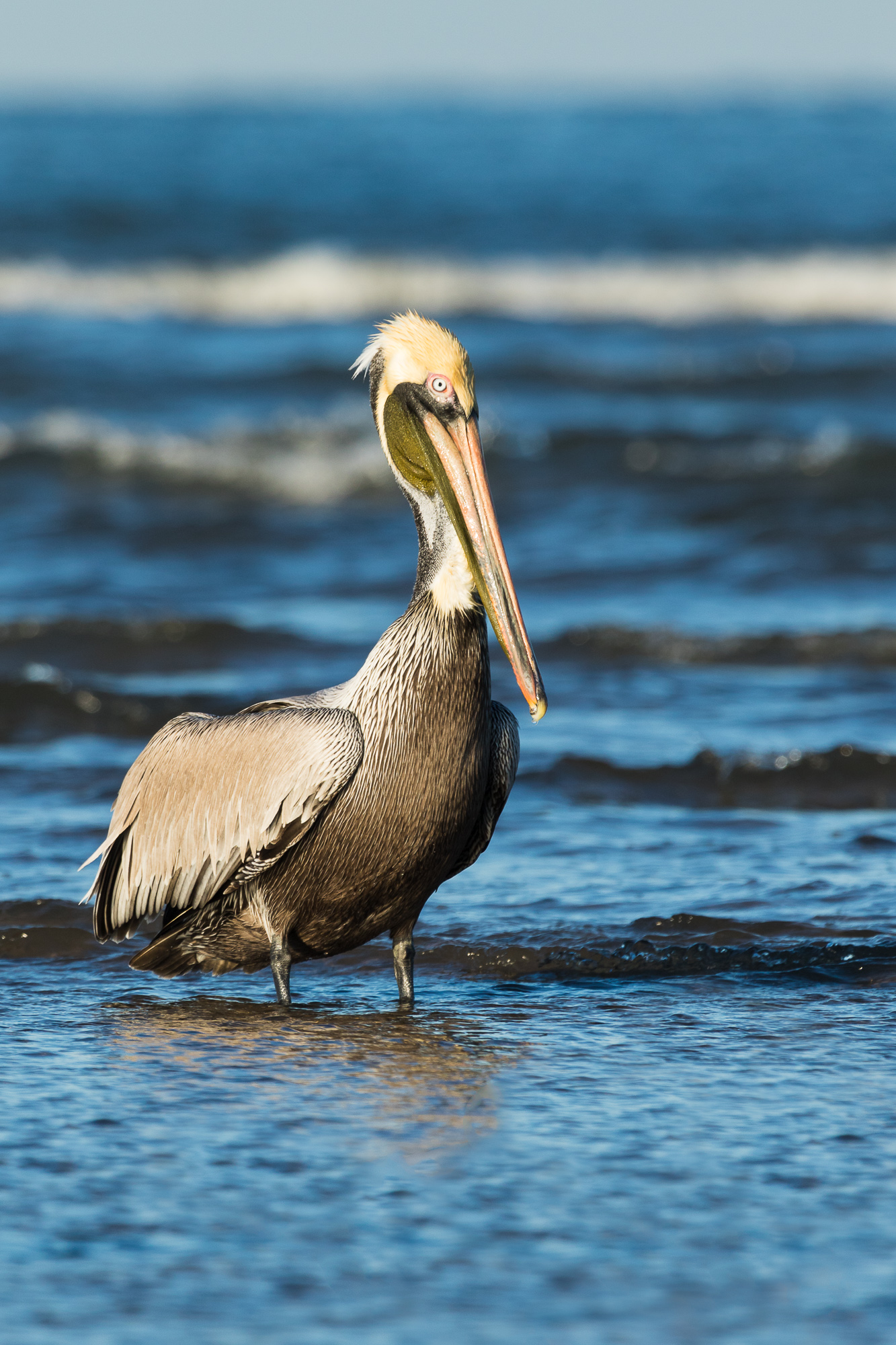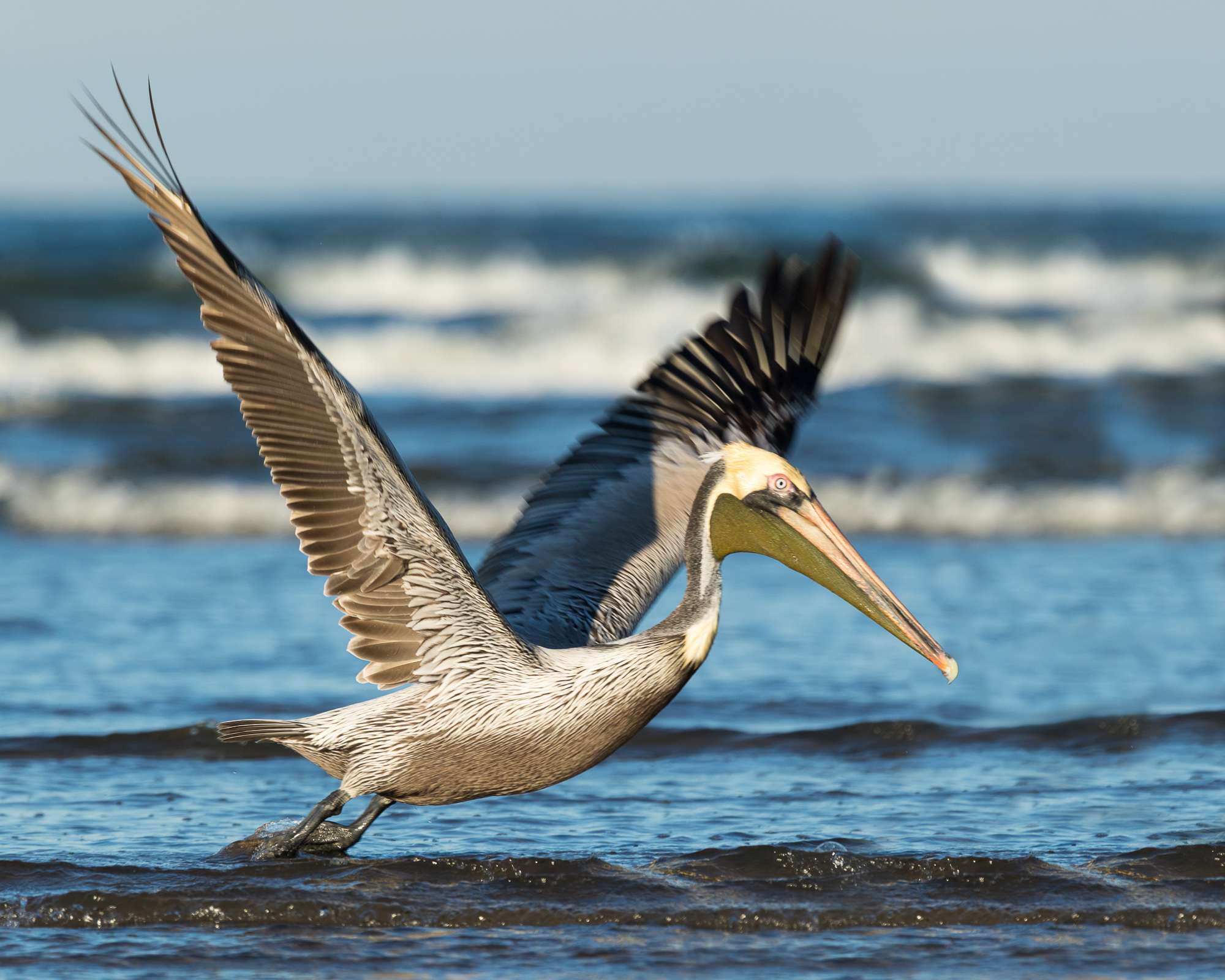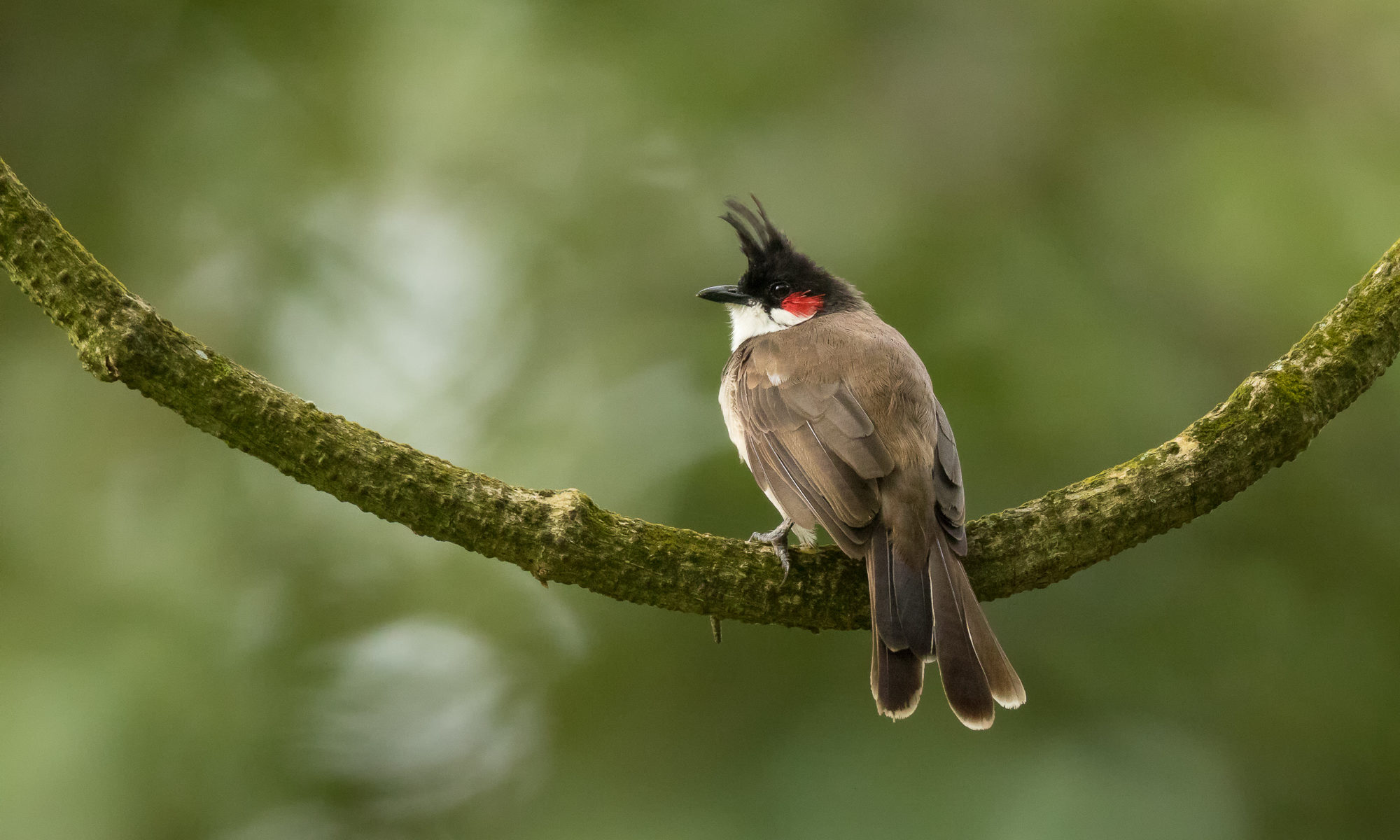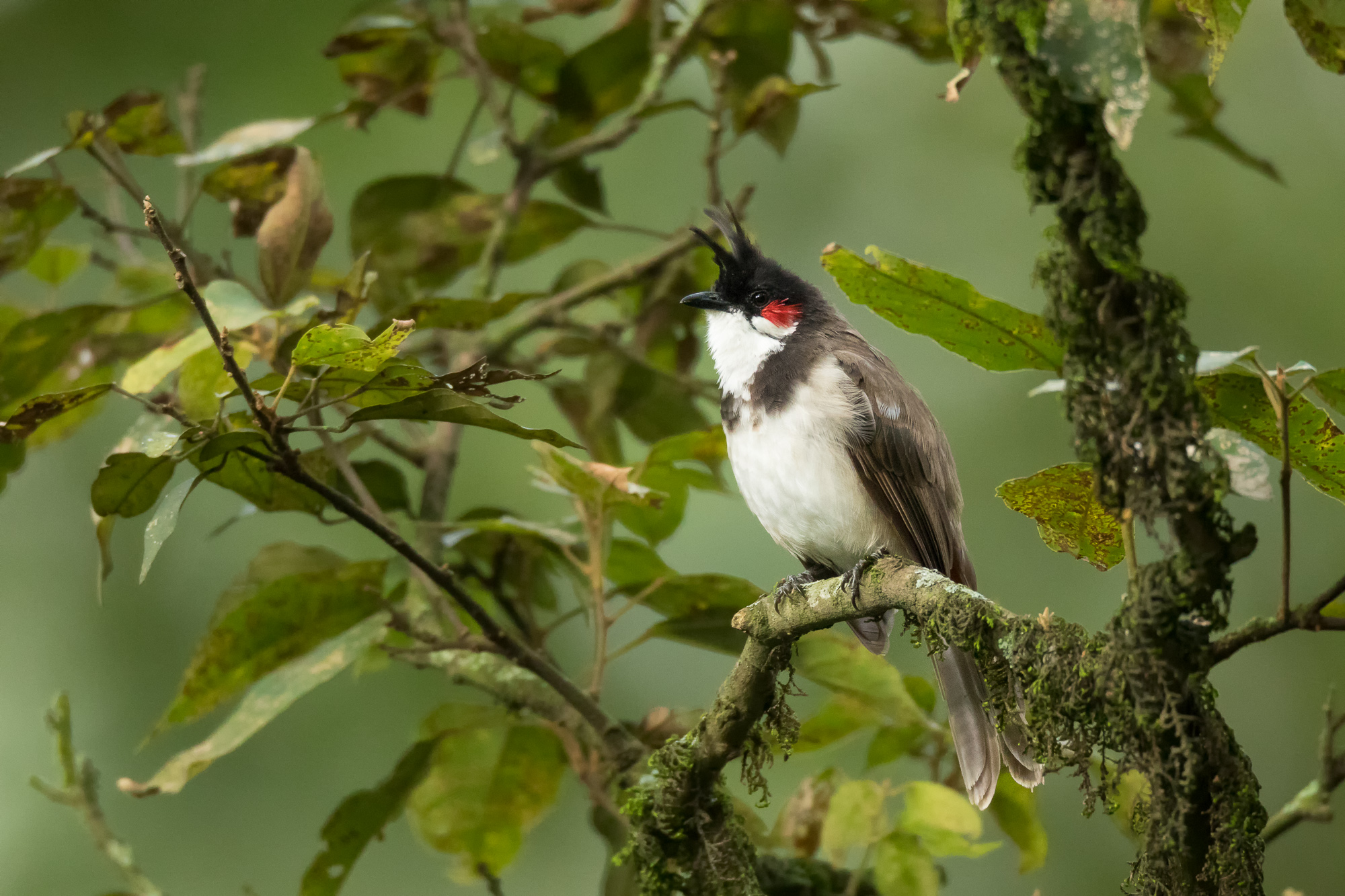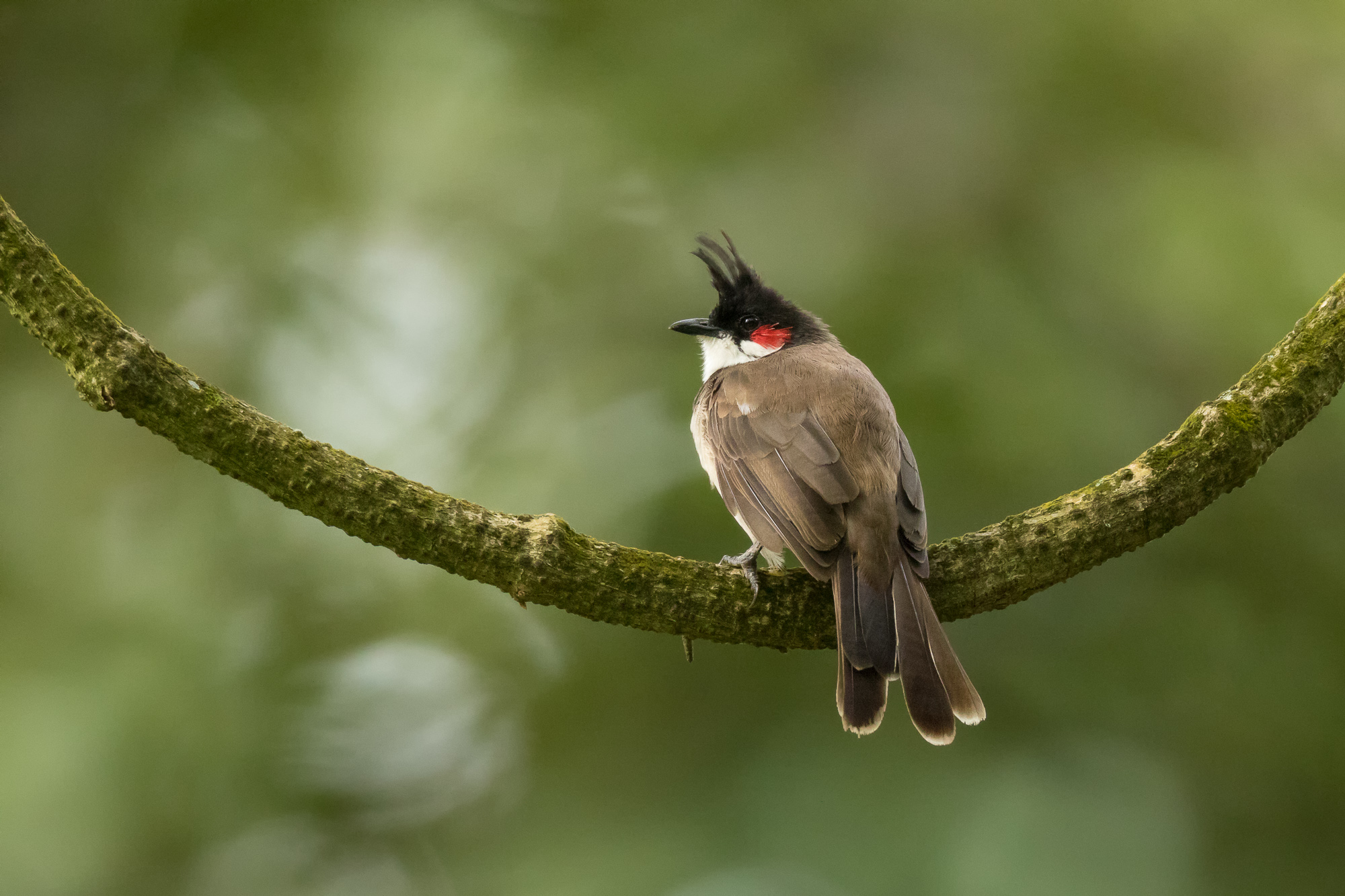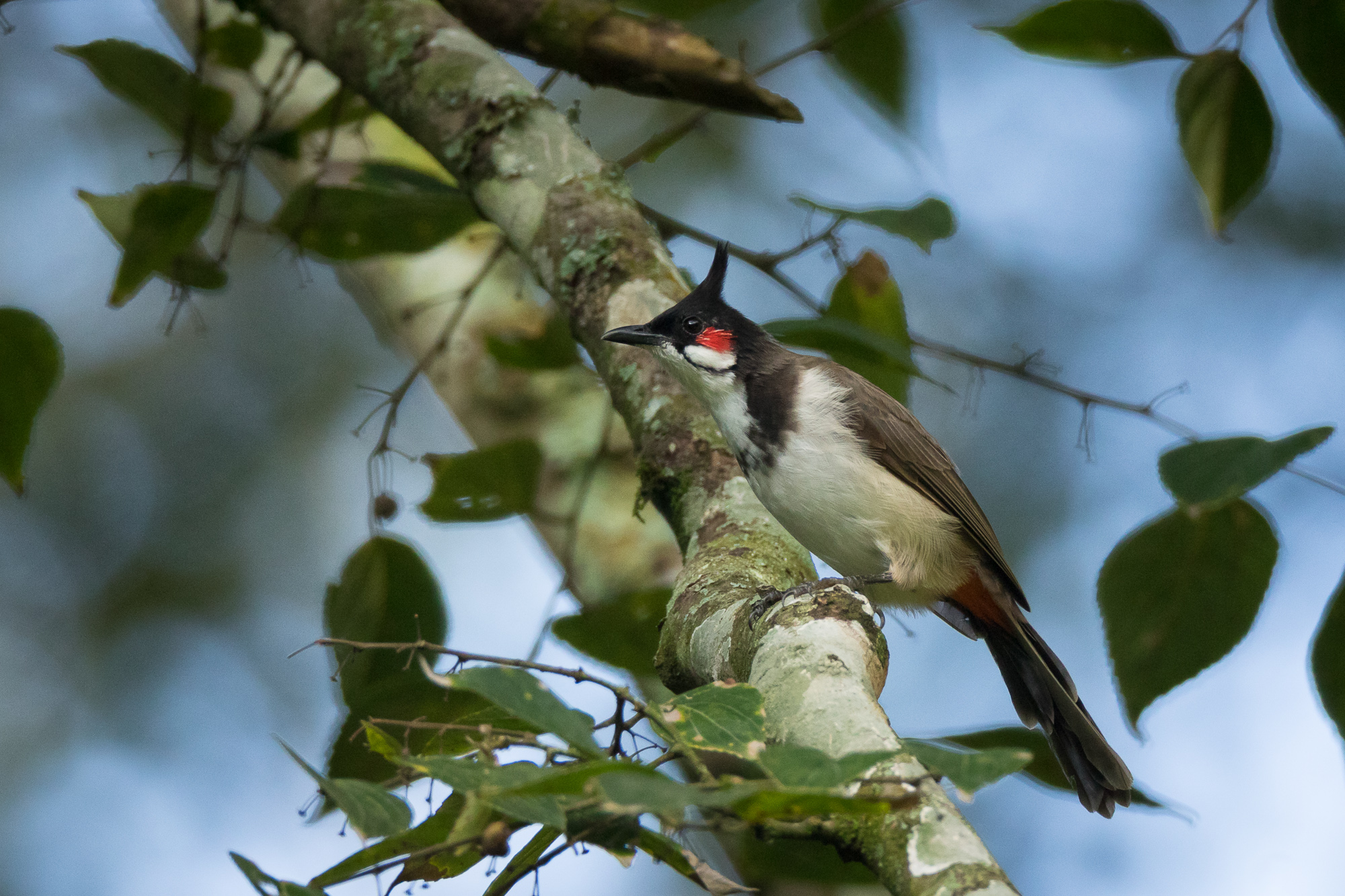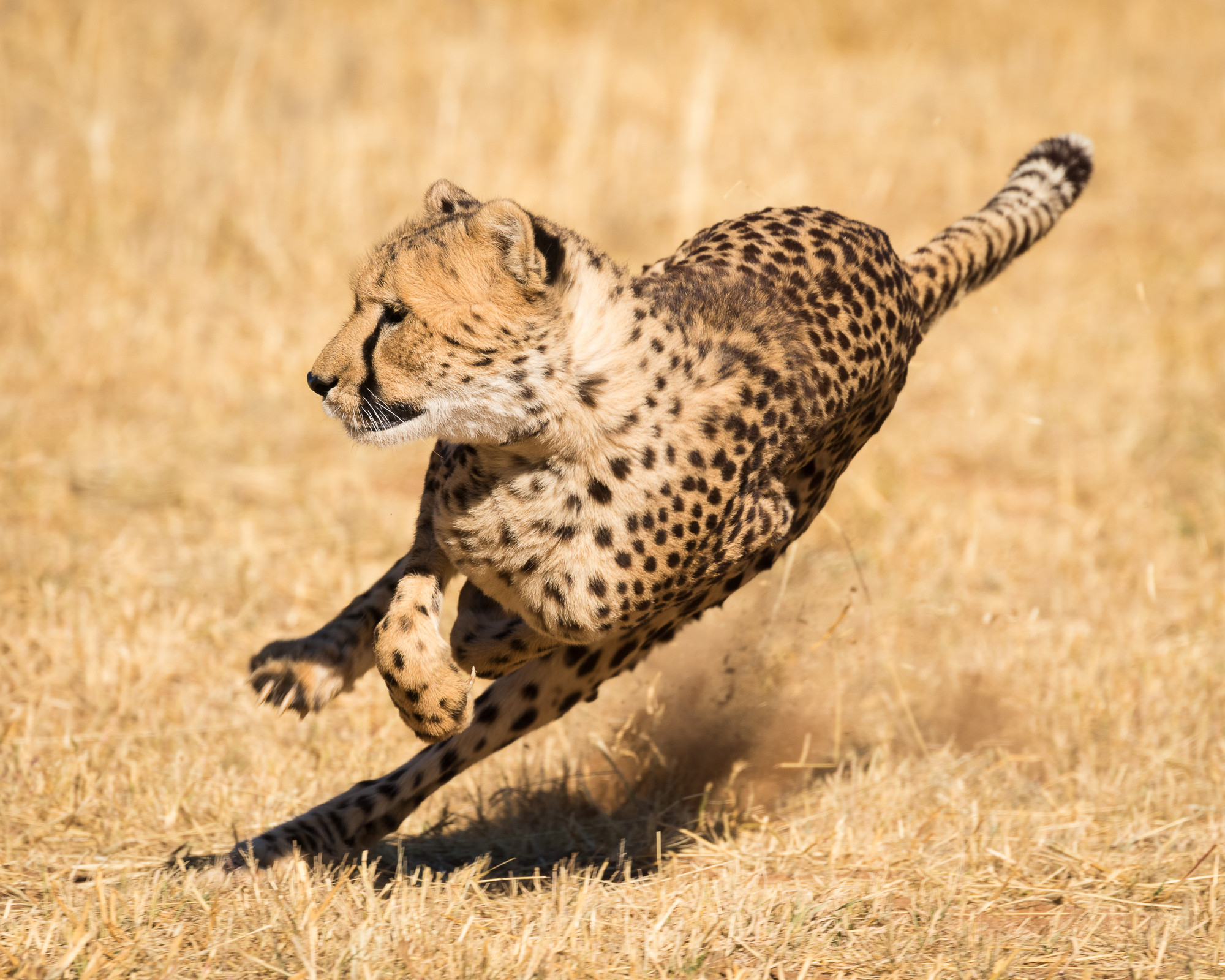
Glancing a movement to its right, all the instincts of evolution sparked the cheetah into instant speed as it exploded after its prey. At an acceleration speed of zero to sixty miles per hour in only three seconds, the chase was immediately at full speed. The huge cat rounded a corner, sending clouds of dirt into the dry, African air, as it came directly toward me. Turning slightly once again, it thundered past, mere feet from me, shaking the ground with its massive paws.
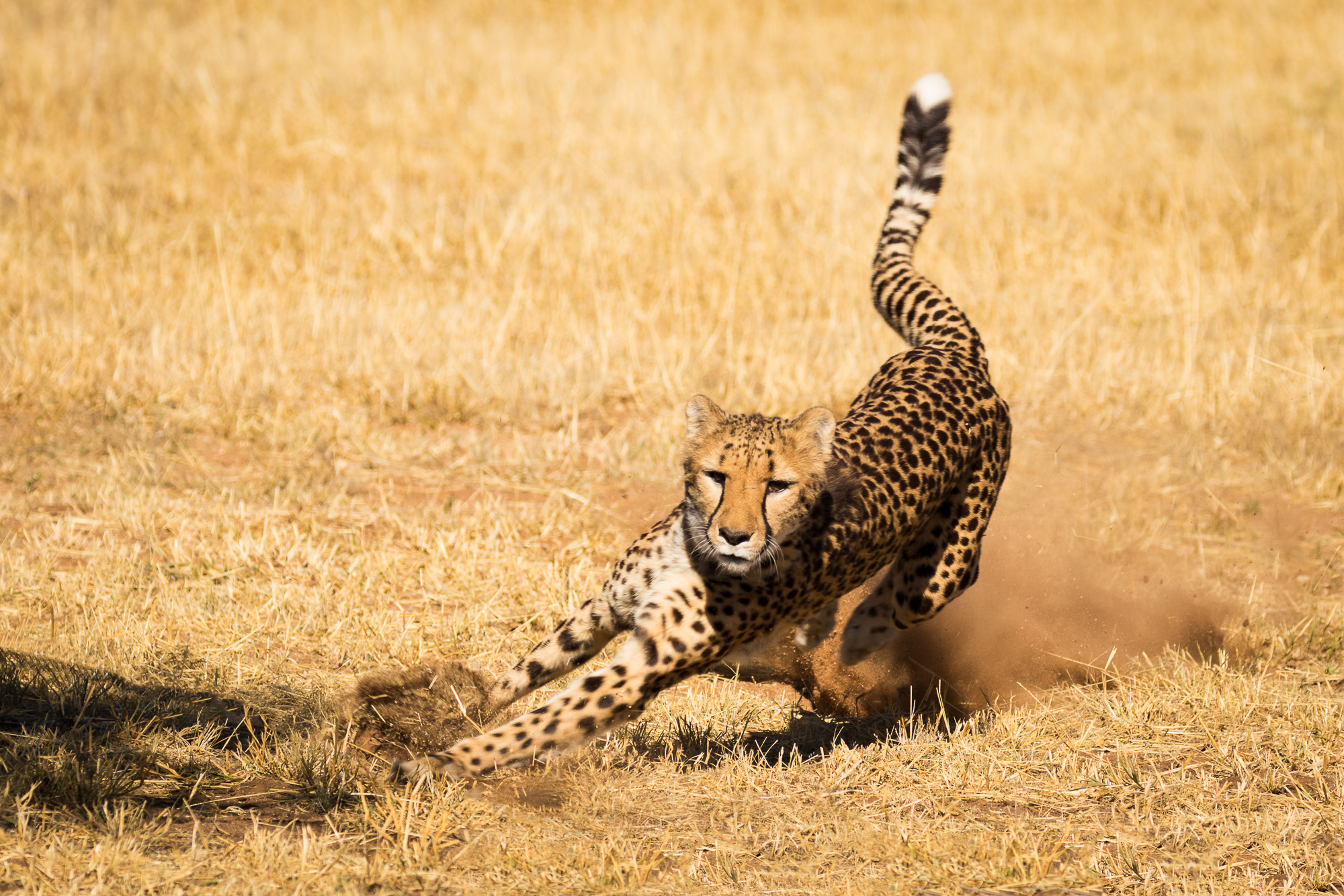
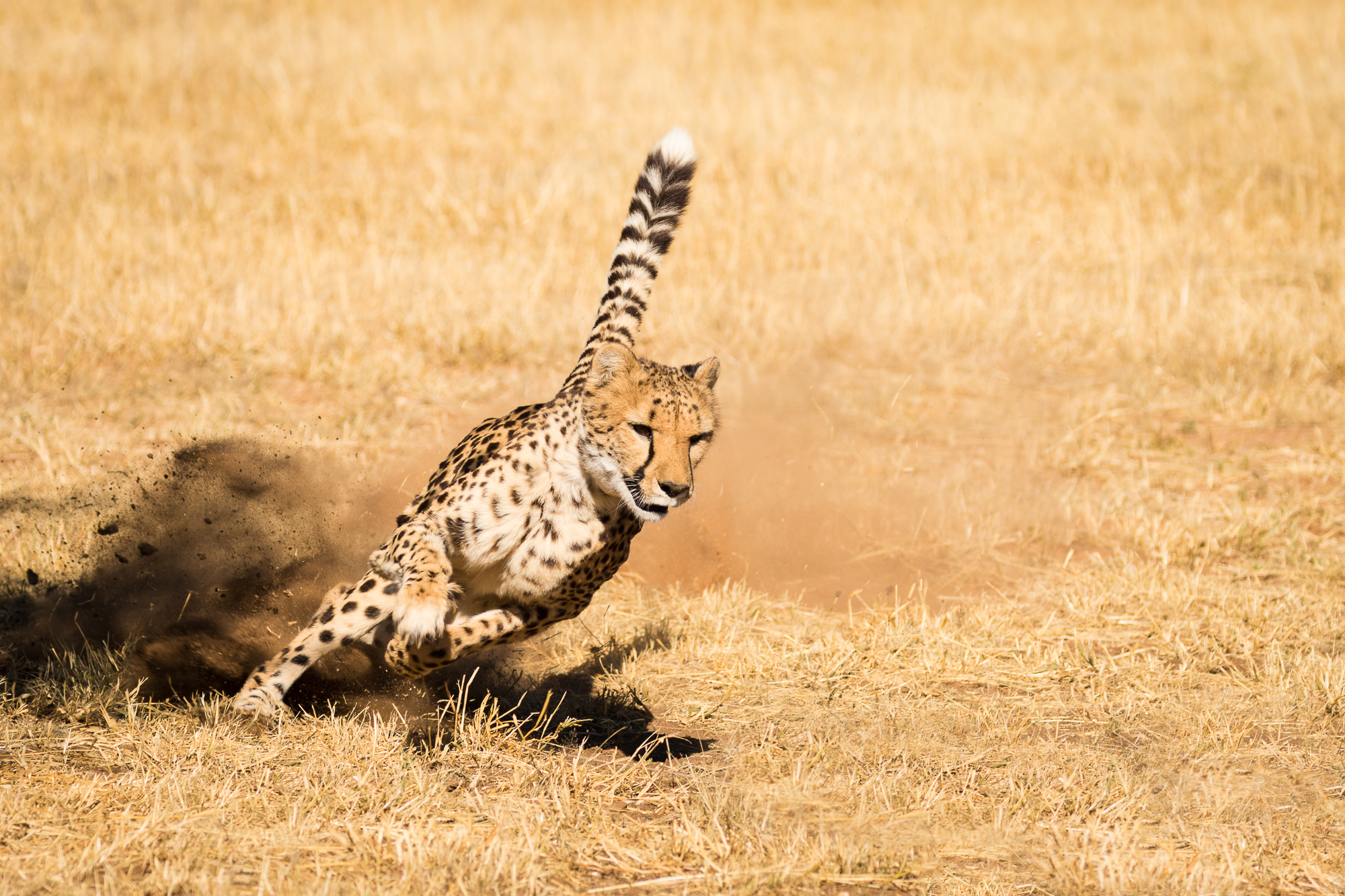
It was my second morning in Namibia and I was at the Cheetah Conservation Fund, experiencing the thrill of cheetahs running no more than ten feet from me. Started in 1990, the CCF works to enhance the long-term survival of the cheetah and other key indigenous wildlife species on Namibian farmlands by developing a habitat improvement program that is both ecologically sound and economically viable. One of its conservation efforts involves fostering and rehabilitating cheetahs, some of which can be released back into the wild.
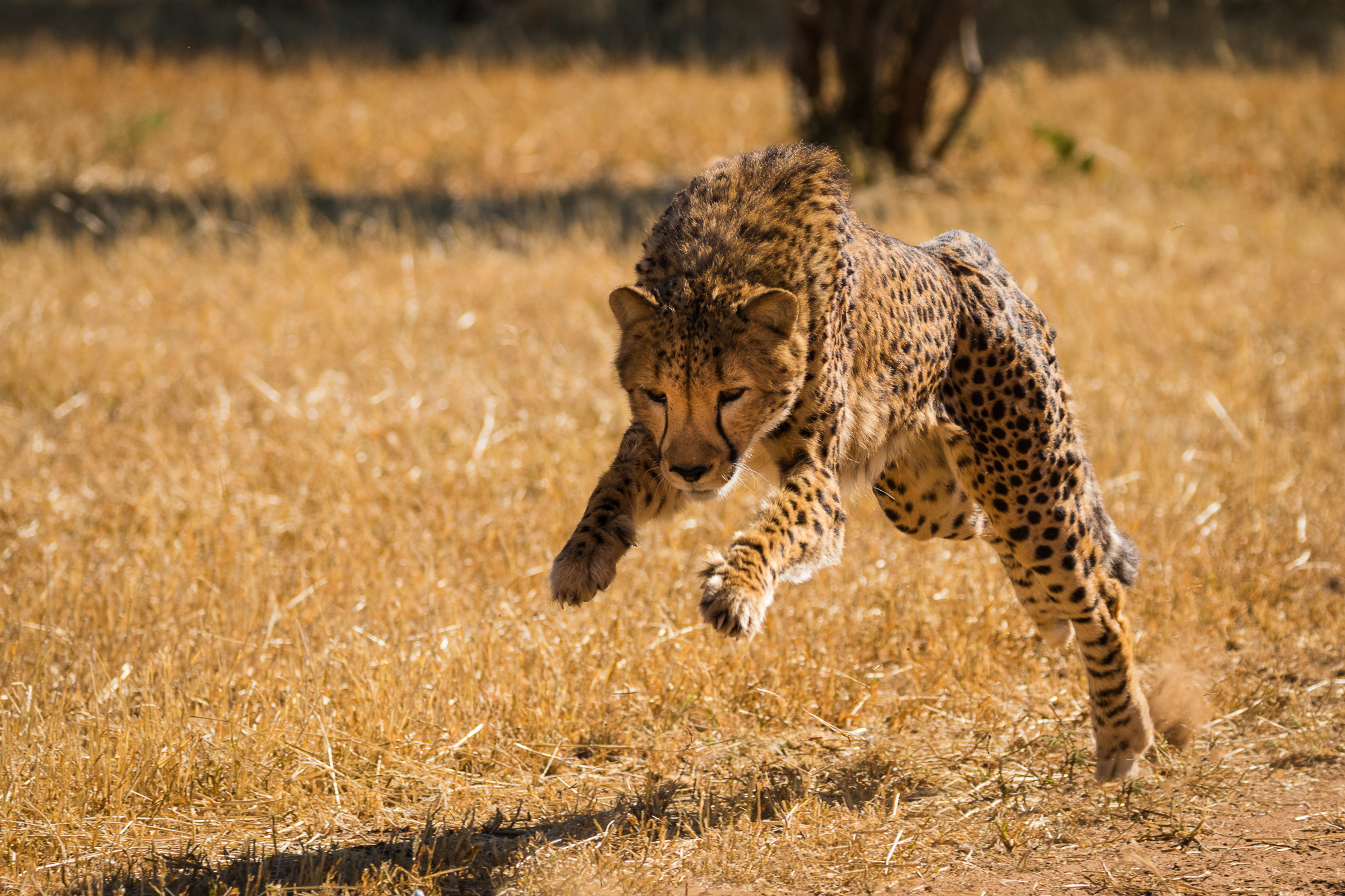
In order to keep the cheetahs healthy, they exercise them by getting them to chase a piece of cloth on a wire. Once the cloth starts moving, the cheetah’s instincts take over and they race to catch the cloth. While their top speed is 70 miles per hour, they were probably reaching speeds of 30-40 miles per hour during this exercise. I was standing in the middle of one such exercise area, watching cheetahs race past – a thrilling experience.
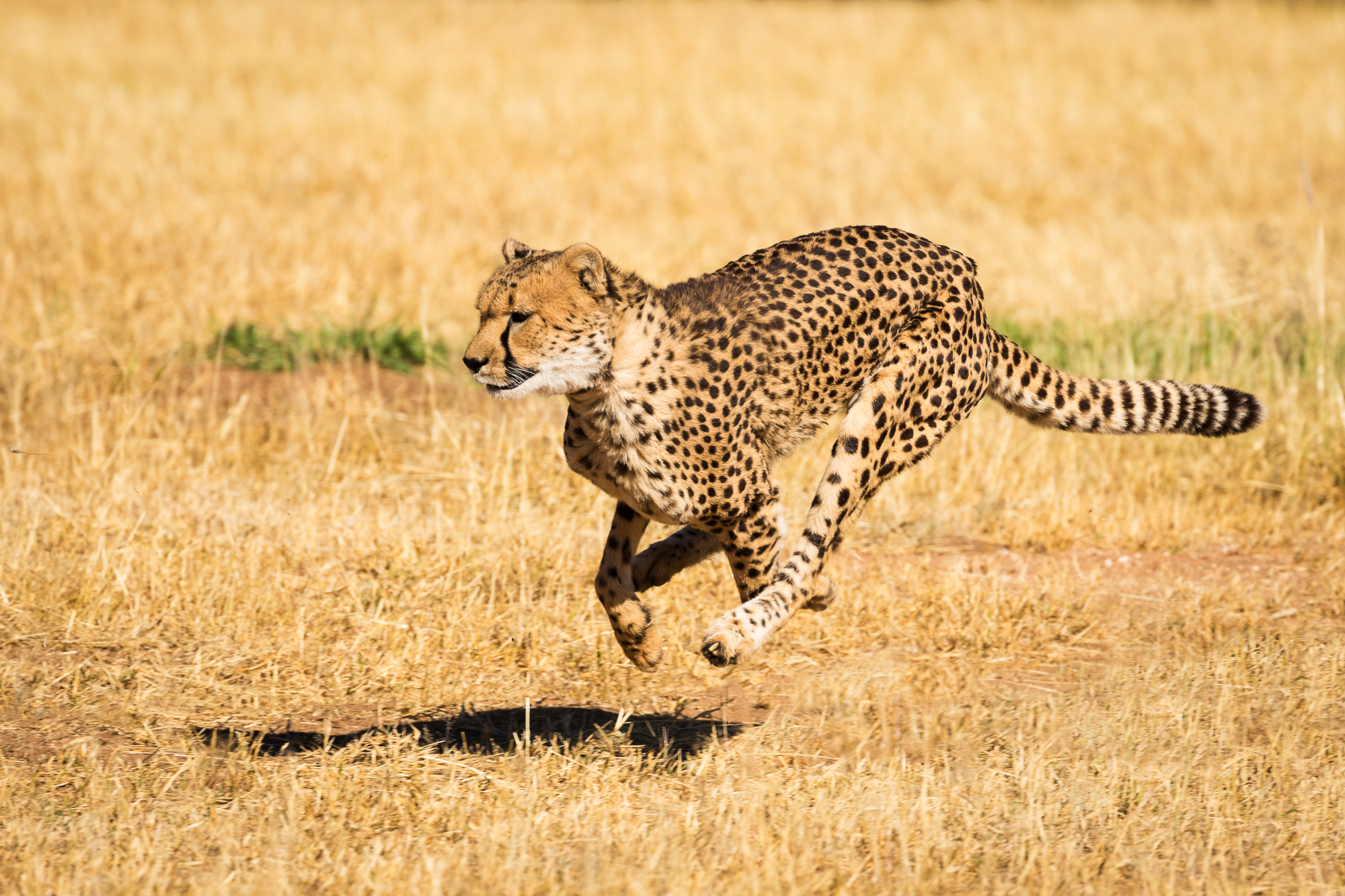
As the fastest animal on earth, the cheetah is one of the few animals where all four feet come off the ground during its running gait. It is hard to appreciate this in person, but photographs can showcase this awesome feat.
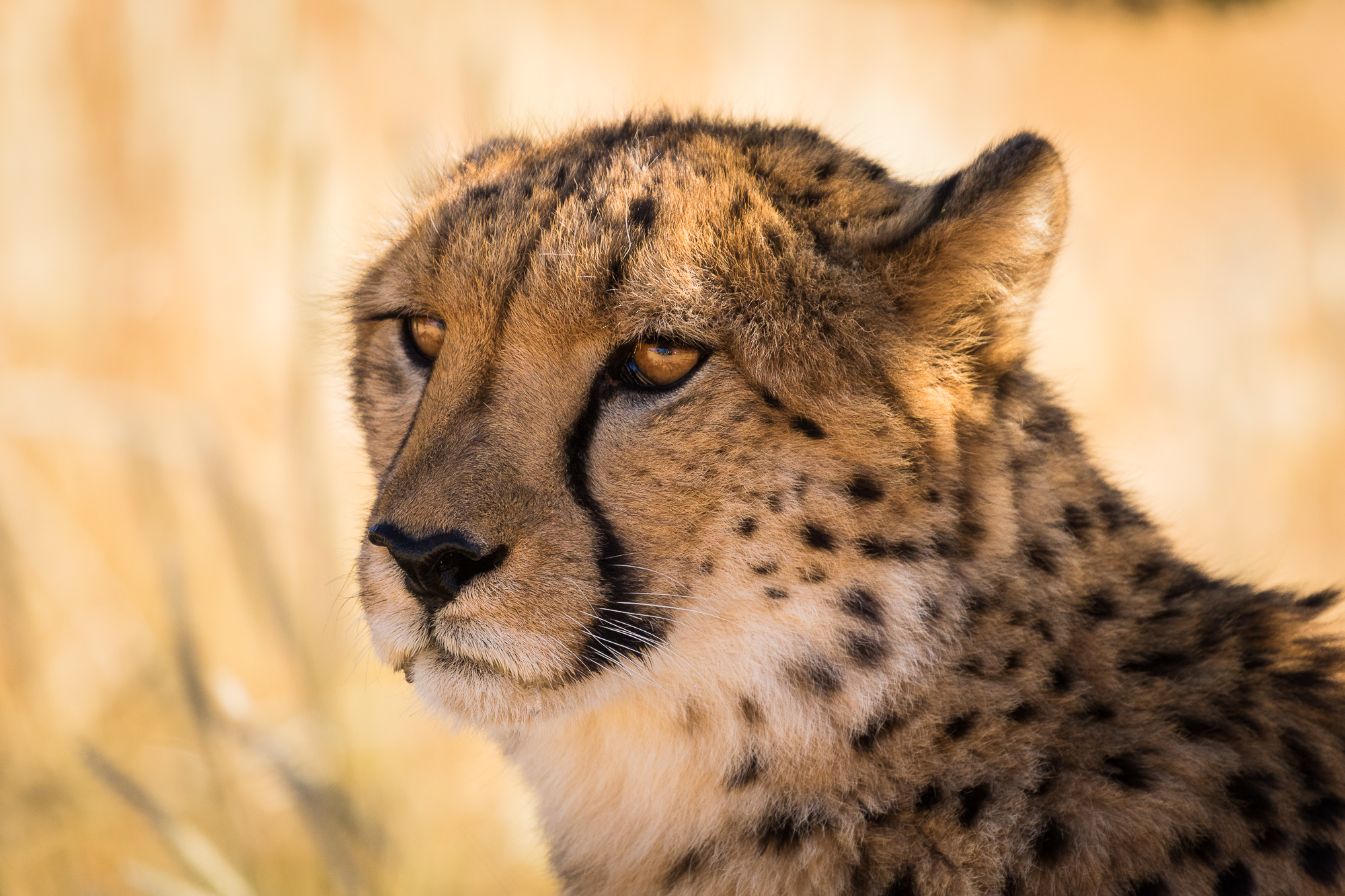
Another CCF conservation method that has saved many cheetah lives is their work with predator-friendly farming methods, such as the Livestock Guarding Dog Program. The CCF raises herding dogs from pups side by side with goats. This habituates the dogs to the goats and helps form a tight bond. The CCF then works with local farmers to use these dogs to herd their livestock, keeping the herd safe from the cheetah. This, along with education, helps reduce the number of cheetahs that are shot by ranchers each year.
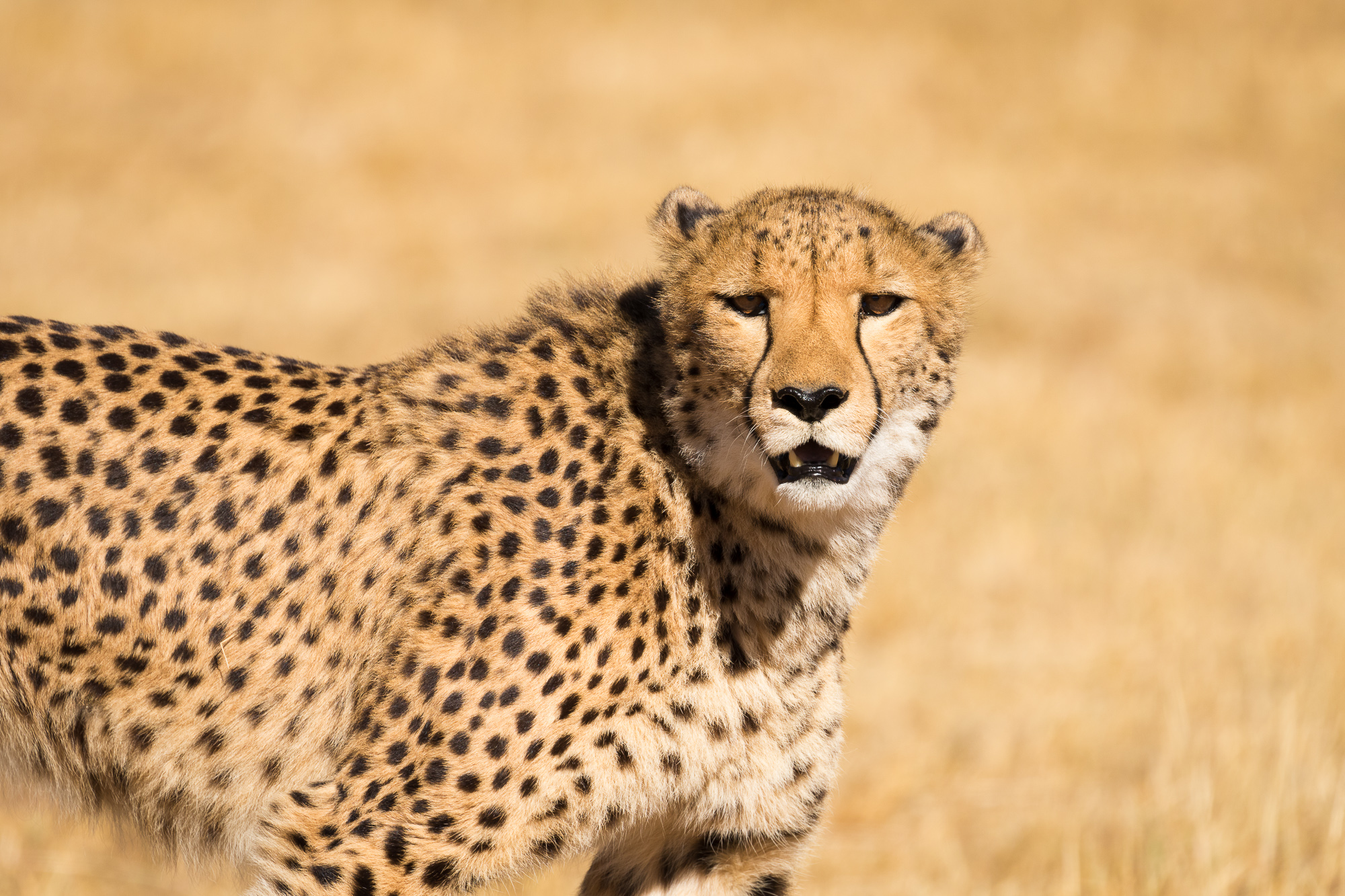
Although I didn’t see these cheetahs out in the wild, it was a wonderful opportunity to get up close and personal with them. I got photographic opportunities for tight headshot portraits, as well as chances to photograph them running. I never would have had this kind of close proximity with free roaming cheetahs.

